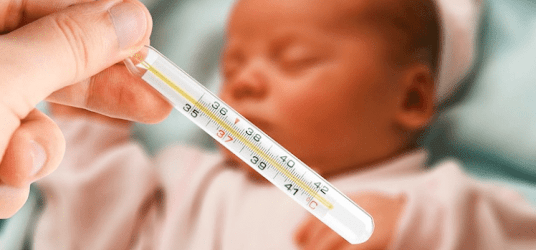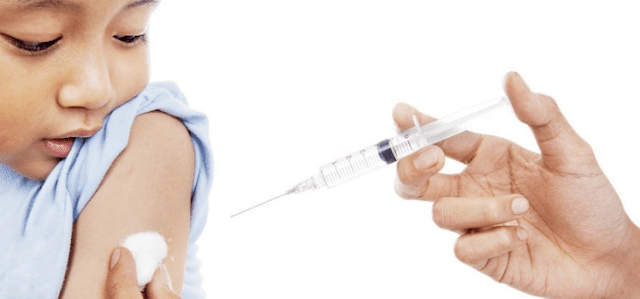Signs and Treatments of Pneumonia in Kids
Pneumonia is an illness caused by fungi, viruses, parasites, and bacteria. It develops after a virus or bacteria causes the first illness. Most of the time, pneumonia starts after a cold or sore throat. Symptoms usually start showing up within two or three days after a sore throat or cold.
According to the best general pediatrician in Delhi, Dr. Promilla Butani, founder of Dr. Promilla Butani's Pediatrics Practice, bacterial diseases that cause pneumonia can last from 1 to 2 weeks with the right medicines. Usually, symptoms should get better about a week after medicines are started. Since there are no medicines to treat viral illnesses, signs of viral pneumonia might persist longer.
Moreover, the time between getting pneumonia and feeling sick is called the "incubation time," It depends on the kind of bacteria or virus that caused the infection. As an example, if a kid has a cold caused by the respiratory syncytial virus (RSV), it can take about up to six days for symptoms to show. The flu virus takes 18 to 72 hours for symptoms to show.
When Should Parents Consult a Child Doctor?
Call the child's pediatrician right away if the kid has any pneumonia signs and symptoms as mentioned below:
Has difficulty breathing or is breathing too fast for them
Fingers or lips turned blue or grey.
Has a fever of 102°F (38.9°C) or above 100.4°F (38°C) in babies within 6 months of age
In such cases, one can consult Dr. Promilla Butani, the skilled Children Pediatrician in Delhi.
How Pneumonia Spreads?
People with pneumonia spread the germs through fluids in their noses, throats, or mouths. The germs get into the air when the sick person coughs. The child gets sick when they take in the germs or touch something that has spit or mucus from the sick person on it. One can get pneumonia from someone who doesn't know they are sick. Pneumonia can't be "caught" by going outside without a coat.
Most children get pneumonia in the winter when they spend most of their time inside and are close to others. Children younger than 2 are most likely to get pneumonia. With the right medical care, almost everyone gets better.
Common Symptoms of Pneumonia
Cough
Fever
Fast/ difficult breathing
Severe shaking chills
Chest pain
Weakness
Tiredness
Muscle aches
Loss of appetite
Vomiting and nausea
Note: Pneumonia triggered by a virus is usually milder than caused by bacteria. The symptoms commonly begin with the flu. They gradually worsen in a few days. Further, fluid can fill the lung's air sacs.
Bacterial pneumonia can strike rapidly, with high-temperature coughing and rapid breathing.
These forms of pneumonia can leave a youngster coughing for weeks, even after the fever has subsided.
Treatments of Pneumonia
Antibiotics are used to treat bacterial pneumonia. Symptoms should diminish within 12 to 36 hours of initiating the treatment.
It is critical to complete the entire course of antibiotics as directed. Stopping the medication too soon may induce the infection to resurface. It may also cause the child's medicine to work less effectively in the future.
Antibiotics cannot be used to treat viral pneumonia. Virus pneumonia normally clears up on its own. But, still consulting a pediatrician is a must.
Things Parents can do to Help Their Child at Home
Manage the temperature with proper medicine and enough strength for the child. Fevers less than 101° F do not require treatment unless the youngster is in pain.
Keep the youngster hydrated by providing plenty of fluids.
Make sure the youngster gets enough rest.
Do not administer over-the-counter (OTC) cough or other OTC medications without consulting a suitable pediatric doctor. The youngster must cough up phlegm. Coughing is the body's technique of getting rid of lung infections.
Avoid exposing the youngster to cigarette smoke or other airborne irritants.
How to Prevent Pneumonia?
Keep the vaccines up to date.
All children should start a series of immunizations to prevent bacterial pneumonia at two months.
Even if they have an egg allergy, all children 6 months and older should receive a flu vaccination yearly.
Teach youngsters to cover their mouths and noses with a facial tissue or shirt sleeve when sneezing or coughing.
After using tissues, they must dispose of them.
Teach and practice proper hand washing.
Often touched surfaces (such as tables, toys, and doorknobs) should be washed with water and soap or disinfected.
Keep smoking out of the house.
If the kid has a weaker immune system or is at high risk due to a chronic kidney, lung, or heart illness, ask the child's health practitioner if additional immunizations are required.




Comments
Post a Comment